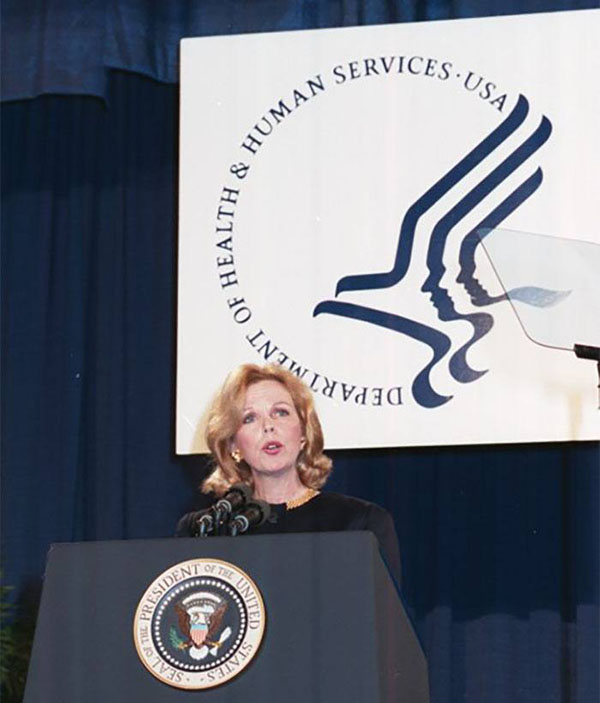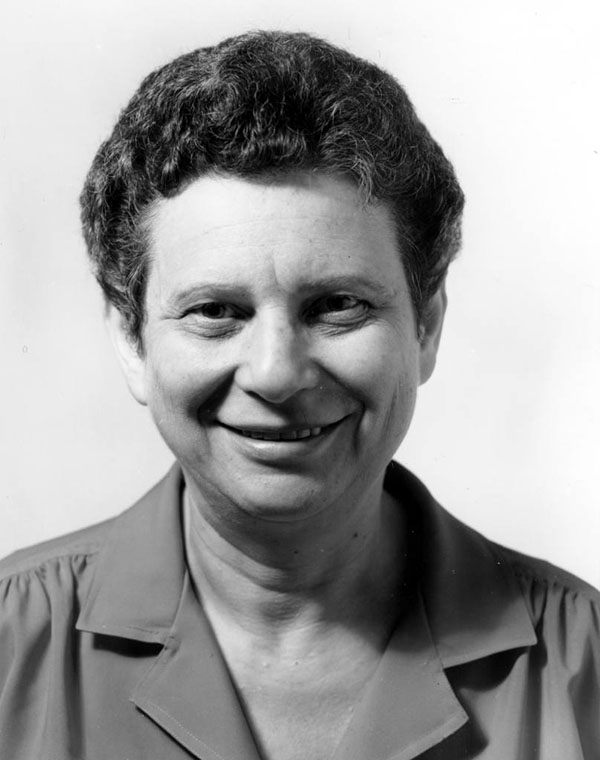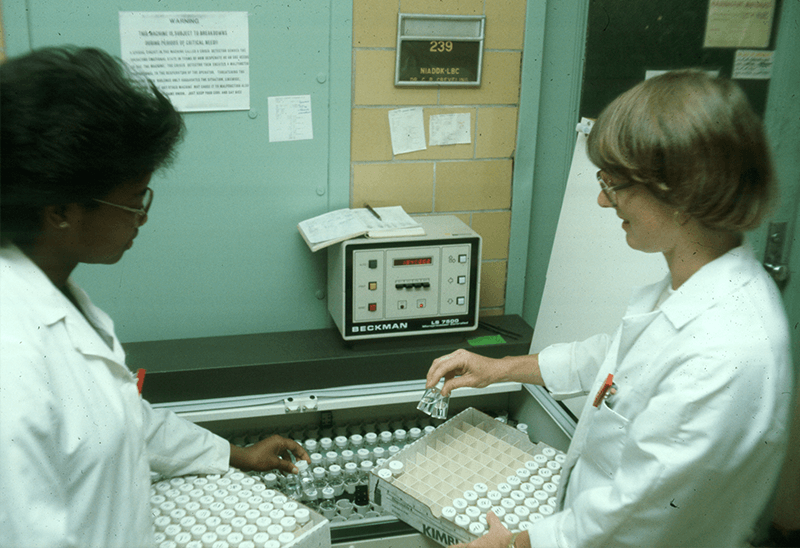A Look Back at the IRP’s History-Making Women
NIH Archives Document the Tremendous Importance of Female Scientists
Women’s History Month is celebrated every March, and women scientists have undoubtedly made invaluable contributions to IRP research over the course of NIH’s history. Despite this, women still remain under-represented in biomedical science at NIH and elsewhere today, prompting the IRP to make supporting the careers of female researchers an important priority. While NIH works to rectify the gender imbalance in scientific research, it’s important to take time to celebrate the many women who, even when confronted with significant historical obstacles, have made a name for themselves in the lab and on the pages of scientific journals. Join me in taking a look through the archives of the Office of NIH History & Stetten Museum to learn about some of the many women scientists who have been at the forefront of science and administration at NIH.
Dr. Bernadine Healy was the first female Director of NIH, named to the position in 1991 by President George H. W. Bush. As Director of NIH, she raised the National Institute of Nursing Research (NINR) to the institute level; launched the Women’s Health Initiative, which investigates the causes of chronic disease in post-menopausal women; and even recruited eventual NIH Director Dr. Francis Collins to lead the Human Genome Project.

Vernice Ferguson was so much more than just a caring, passionate nurse. She also spent her career fighting for equal recognition, pay, and opportunities for her fellow nurses. Ferguson was the chief of the Nursing Department at the NIH Clinical Center from 1972-1980 and then became the chief nursing officer for the Veterans Health Administration in the U.S. Department of Veteran Affairs, overseeing 60,000 nurses nationwide.
“What is good enough for the doctor is good enough for me and the nursing staff,” she once said. “Whatever the boys have, I am going to get the same thing for the girls.”

Dr. Emma Shelton started working at the National Cancer Institute (NCI) in 1946. From the very beginning, she was a pioneer, becoming the first woman awarded a full scholarship from NCI to earn her doctorate in cell biology from Brown University. In the photo below, Dr. Shelton and Dr. Albert Dalton are learning to use new photographic technology.
During her 32 years at NIH, Dr. Shelton became one of the first women to run her own lab and published numerous ground-breaking articles detailing her discoveries about our cells through the lens of ‘systems biology,’ which looks at how the many interacting components within a cell or organism work together. Upon her retirement, she was awarded the Public Health Service Superior Service Award for “fundamental contributions to an understanding of biological organization at both the cellular and molecular levels.”

When Dr. Elizabeth Neufeld was elected to the National Academy of Sciences (NAS) in 1977, she was the first woman from NIH to receive the honor. The awards didn’t stop there, though. Dr. Neufeld’s research on rare childhood diseases, like hereditary lysosomal storage disorders that cause cells’ waste disposal systems to malfunction, earned her many other accolades, including the Lasker Award in 1982. In addition, she received the National Medal of Science in 1994 while running a lab at the University of California, Los Angeles.

Dr. Betty Pickett joined the National Institute of Mental Health (NIMH) soon after its founding in 1949. After rising to the position of Deputy Director, she helped shape mental health sciences in the United States. In 1975, in recognition of her work “promoting and improving the quality of mental health research programs,” she received the Distinguished Service Award from the U.S. Department of Health & Human Services (then known as the Department of Health, Education, and Welfare). She also brought her administrative skill to both the National Institute on Aging (NIA) and the Eunice Kennedy Shriver National Institute of Child Health and Human Development (NICHD) before retiring in 1988.

March is also National Kidney Month, and this photo from the 1980s spotlights two female technicians working at the National Institute of Diabetes and Digestive and Kidney Diseases (NIDDK). While we do not have record of their names, we do know that these women worked in the Laboratory of Bioorganic Chemistry with Drs. John Daly and Cyrus R. Creveling. In this photo, they are taking samples from a liquid scintillation counter, which measures low levels of radioactivity.

Dr. Maxine Singer joined the NIH Institute that would later become NIDDK, the National Institute of Arthritis and Metabolic Diseases, in 1956 to study the new field of nucleic acid chemistry. She specifically studied viral genetics and RNA synthesis, and her work on the latter helped Nobel Prize winner Dr. Marshall Nirenberg crack the genetic code. Despite being a pioneer in the field and rising to the position of investigator in the mid-1960s, she had a hard time recruiting researchers to her lab because no one wanted to work for a woman. With this realization, Dr. Singer became a strong advocate for women in science.
In this photo, Dr. Singer is speaking to reporters at a 1977 meeting held at NIH to inform the scientific community and the media about proposed legislation in Congress designed to regulate recombinant DNA research. She was a leading voice at the time on that controversial area of scientific inquiry, having organized the landmark Asilomar Conference that took place in February 1975. At Asilomar, scientists agreed to impose restrictions on recombinant DNA research and develop a framework for removing those restrictions as knowledge of the science advanced. For the next decade afterwards, she remained an influential participant in the vigorous debate over genetic engineering as a member of NIH advisory committees on recombinant DNA and as an expert witness before Congress.

Subscribe to our weekly newsletter to stay up-to-date on the latest breakthroughs in the NIH Intramural Research Program.
Related Blog Posts
This page was last updated on Wednesday, July 5, 2023
